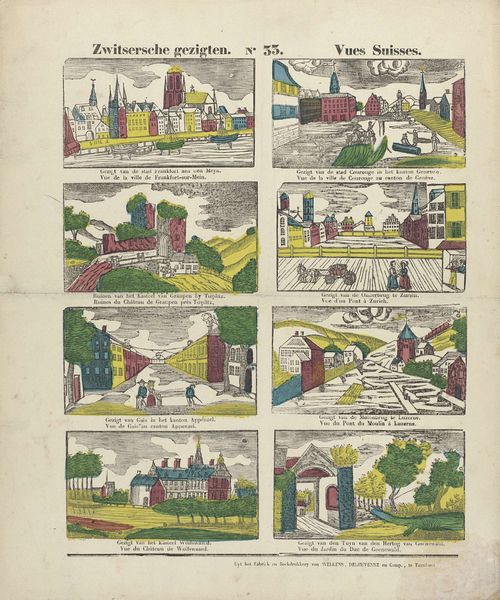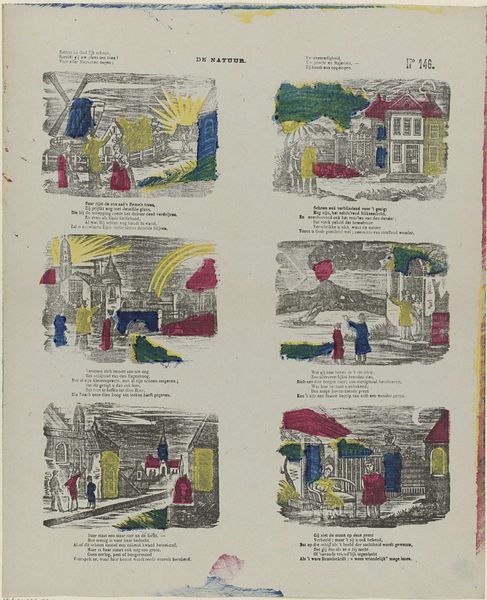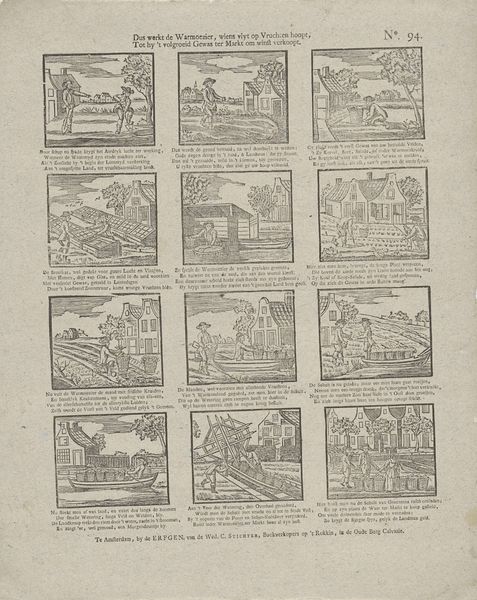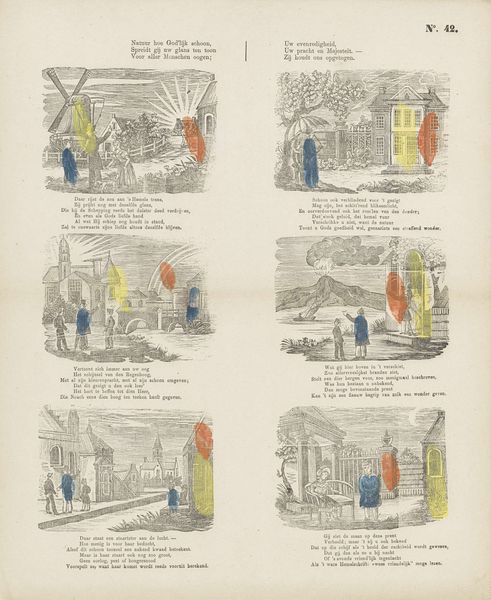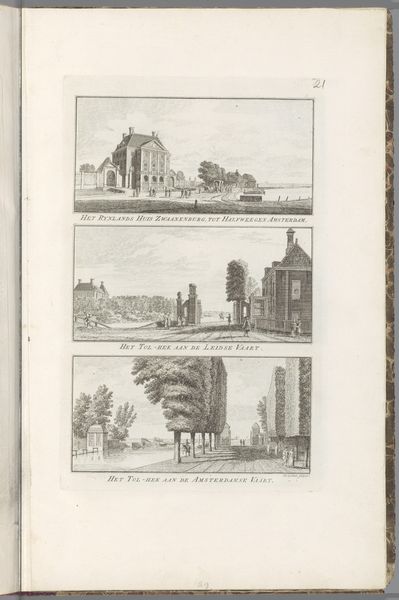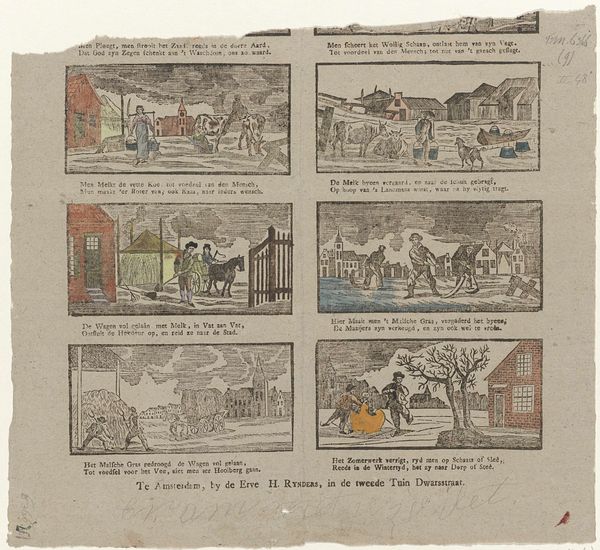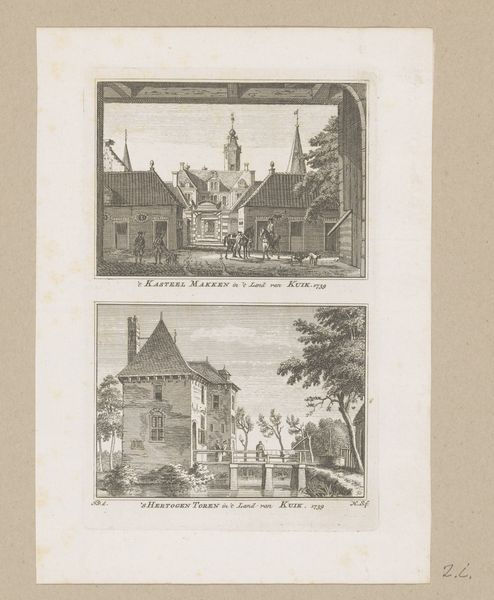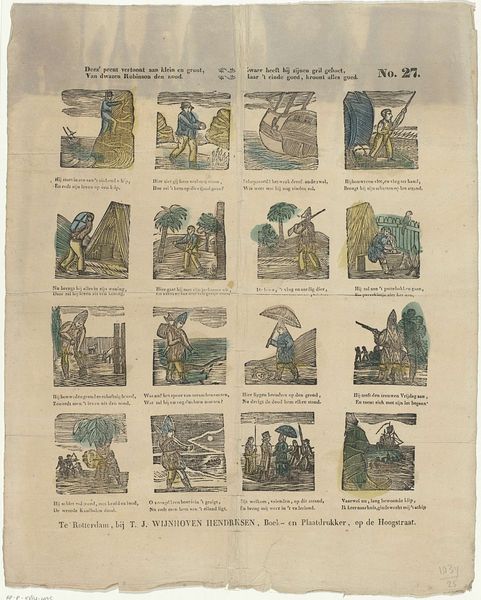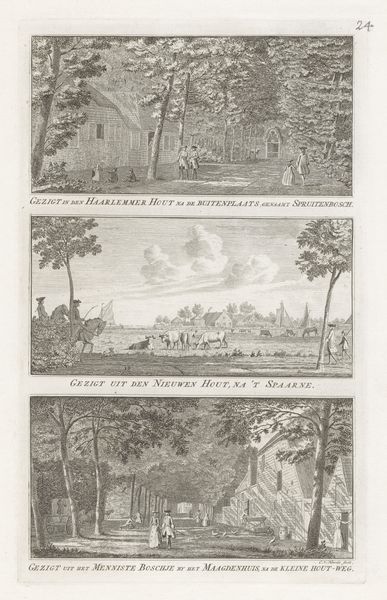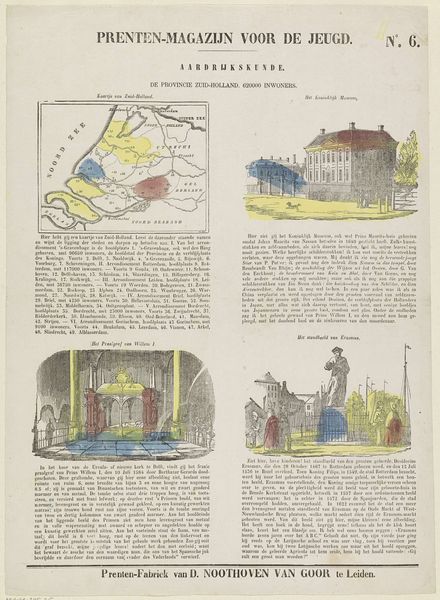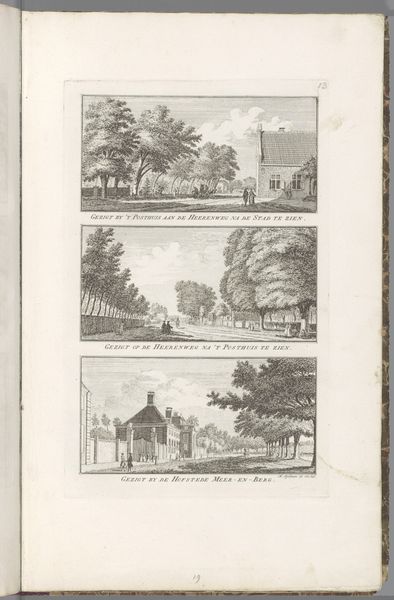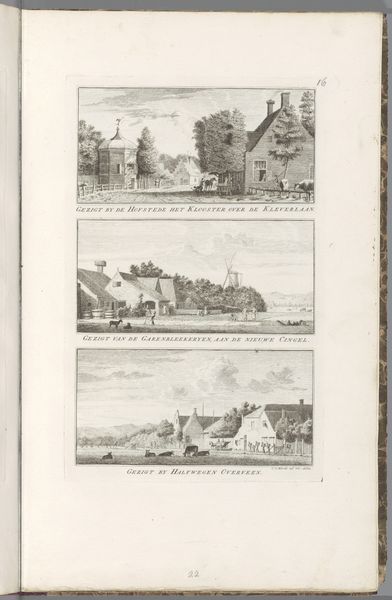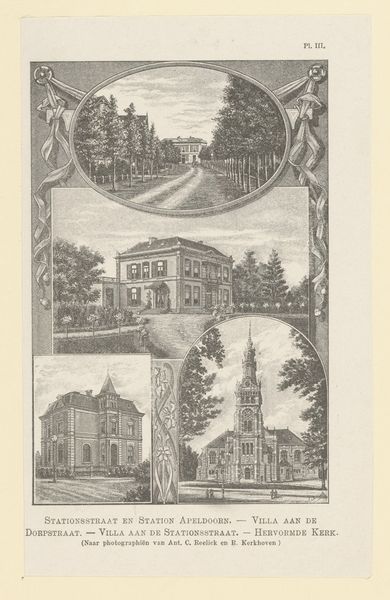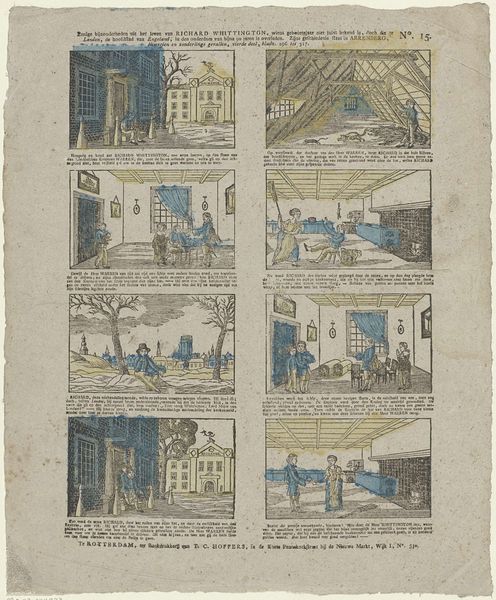
Dimensions: height 357 mm, width 284 mm
Copyright: Rijks Museum: Open Domain
Editor: This artwork is called "De Natuur," or "Nature" in English, by P.C.L. van Staden Czn., created sometime between 1850 and 1870. It seems to be a print made with watercolor on paper. What strikes me is its somewhat naive, childlike style and how it's divided into different scenes or vignettes. How do you interpret this work? Curator: It's fascinating how each vignette appears as a window into different aspects of 'Nature,' almost like a visual poem or series of moral lessons. The presence of children pointing and observing in nearly every scene suggests an emphasis on learning and experiencing the world, doesn’t it? Think of it as an early form of visual education, using the natural world to instill values. Editor: That’s a great point. So the scenes like the windmill or even the erupting volcano are not just landscapes but opportunities for instruction. The rainbow connecting two towers...is that symbolic too? Curator: Indeed. Consider the rainbow as a symbol of promise, linking heaven and earth, a common motif in Romanticism reflecting the sublime power and beauty of the natural order. What’s really interesting to consider is how these accessible and somewhat idyllic images shape the viewers understanding of their relationship to a larger, often divine, narrative. Editor: That really opens up the way I see the print, It's less about pure aesthetics, and more about the symbolic weight. Thank you. Curator: And thank you, seeing this work through your eyes makes me remember its initial goal, helping shape the worldview of its audience.
Comments
No comments
Be the first to comment and join the conversation on the ultimate creative platform.
